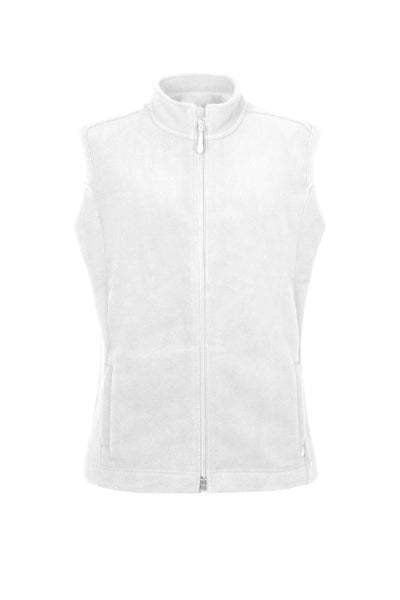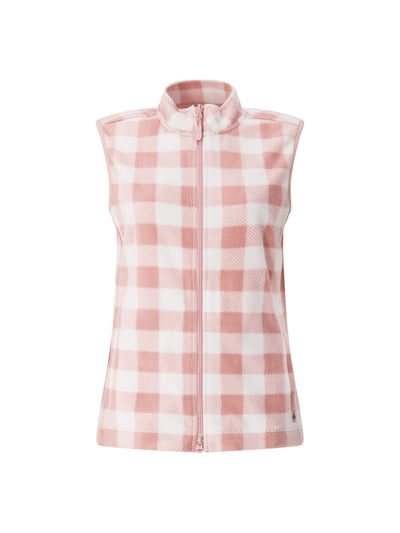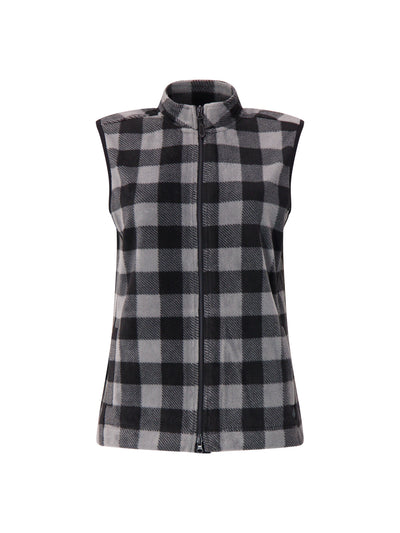Winter is a season that demands not only style but also practical warmth. One versatile piece that can help achieve this balance is the winter vest. This article will explore how to wear a winter vest effectively, ensuring maximum warmth without sacrificing style.
Understanding the Basics of Winter Vests
A winter vest is a sleeveless outer garment that serves to keep your core warm while allowing for greater freedom of movement in your arms. Unlike bulky jackets, vests are ideal for layering, making them a strategic choice for cold weather.
The Importance of Layering
Layering is crucial for maintaining body heat in winter. By wearing multiple layers, including a winter vest, you can easily adapt to fluctuating temperatures, whether you’re indoors or outdoors. The principle behind layering is to trap warm air close to the body while providing the ability to adjust clothing as needed.
Start with a moisture-wicking base layer, add a warm middle layer, like a sweater or fleece, and top it off with your vest for the best results. Each layer plays a vital role in insulation and moisture management. Additionally, layering allows you to mix and match different styles and materials, giving you the flexibility to express your personal style while staying warm. This adaptability is especially beneficial for those who enjoy outdoor activities during the winter months, as it ensures comfort and functionality regardless of the conditions.
Types of Winter Vests
Winter vests come in various styles and functionalities, making them suitable for different activities and weather conditions. Here are some common types:
-
Insulated Vests: These vests are filled with synthetic materials, providing exceptional warmth.
-
Ski Vests: Designed for outdoor sports, these vests often incorporate weather-resistant materials and functional features.
-
Casual Vests: Perfect for everyday wear, these vests can be dressed up or down.
In addition to these common types, there are also specialized vests designed for specific purposes, such as fishing or hiking. These vests often come equipped with pockets and attachments for tools or gear, enhancing their practicality. Furthermore, some brands offer vests with built-in heating elements, providing an extra layer of warmth for those particularly frigid days. With such a diverse range of options, finding the right vest to suit your lifestyle and activities is easier than ever.
Material Considerations for Maximum Warmth
The material of your winter vest significantly influences its warmth and functionality. Popular materials include:
-
Down: Known for its lightweight warmth, down is a top choice for insulation but may not perform well when wet.
-
Synthetic Insulation: This type retains warmth even when wet and is often more affordable, making it a practical choice.
-
Fleece or Wool Linings: These materials provide comfort and additional warmth while wicking moisture away from the body.
When selecting a winter vest, it’s also essential to consider the outer fabric. Many vests feature water-resistant or waterproof exteriors, which can be invaluable in snowy or rainy conditions. Breathability is another critical factor; a vest that allows moisture to escape will help keep you comfortable during physical activities. Moreover, some modern vests are designed with eco-friendly materials, appealing to environmentally conscious consumers who want to stay warm without compromising their values. With advancements in fabric technology, the options available today not only provide warmth but also enhance your overall outdoor experience.

Choosing the Right Winter Vest
Selecting the perfect winter vest involves understanding your personal needs and preferences. Factors such as size, insulation type, and intended use should all play a role in your decision.
Size and Fit
The fit of a winter vest is crucial for both comfort and warmth. A vest that is too tight can hinder movement, while one that is too loose may not retain heat effectively. When trying on vests, consider the following:
-
Ensure there is enough room for layering underneath.
-
Check that armholes are cut wide enough for comfortable movement.
-
Pay attention to the length; a vest should cover your midsection to trap warmth effectively.
Additionally, it's important to think about the type of clothing you typically wear underneath your vest. If you prefer thicker sweaters or base layers, opting for a slightly larger size may be beneficial. Some brands also offer tailored fits, which can provide a more streamlined look without sacrificing warmth. Remember, the right fit not only enhances comfort but also boosts your confidence as you brave the chilly weather.
Insulation and Warmth Ratings
Different vests come with varying insulation materials and warmth ratings, which are essential for understanding how well they will perform in cold conditions. Look for details on the vest’s insulation type and any temperature ratings provided by the manufacturer.
For example, down vests may have fill power ratings indicating their warmth-to-weight ratio, while synthetic vests might specify the level of warmth they provide at different temperatures. Choose a vest that meets your typical use-case scenarios, whether that’s casual outings, outdoor sports, or simply keeping warm on daily errands. It's also worth noting that some manufacturers use a combination of insulation types to maximize warmth and breathability, which can be particularly advantageous for active individuals who need to regulate their body temperature during physical activities.
Vest Features for Cold Weather
When choosing a winter vest, consider unique features that enhance its functionality in cold weather:
-
Pockets: Look for vests with multiple pockets for hands and storage.
-
Hood: Some vests come with detachable hoods to protect against wind and snow.
-
Zipper and Closure Types: High-quality zippers and closures ensure a snug fit and efficient moisture management.
Moreover, consider vests with adjustable features such as drawstrings at the hem or cuffs to help seal in warmth and customize the fit according to your layering needs. Reflective elements can also be a valuable addition for those who enjoy evening walks or outdoor activities in low-light conditions, enhancing visibility and safety. Lastly, look for vests made from water-resistant or windproof materials, as these can provide an extra layer of protection against the elements, ensuring you stay warm and dry no matter the weather conditions.
Styling Your Winter Vest
Once you have chosen the right winter vest, it’s time to consider how to style it. A vest adds a layer of complexity to your outfit and can easily transition from casual to semi-formal looks.

Pairing with Different Outfits
Winter vests can be paired with various outfits, ranging from casual jeans to professional attire. Here are some versatile ideas:
-
Casual Look: Team your vest with a long-sleeve shirt and jeans for a relaxed vibe.
-
Office Attire: A fitted vest over a collared shirt and dress pants can make a chic professional statement.
-
Outdoor Gear: Pair with a thermal long-sleeve top and outdoor pants for hiking or skiing.
Accessorizing Your Vest
Accessorizing can elevate the aesthetic of your winter vest. Consider adding:
-
Scarves: A chunky knit scarf adds color and warmth.
-
Beanies: A stylish beanie keeps your head warm and complements your look.
-
Gloves: Coordinate your gloves with your vest for a cohesive style.
Balancing Comfort and Style
To achieve the perfect balance of comfort and style, choose vests that match your everyday wardrobe while keeping warmth in mind. Always prioritize functional pieces that can adapt to varying conditions. Pay attention to the fit and material to ensure maximum comfort throughout the day.
Additionally, consider layering your vest over a lightweight, breathable base layer to help regulate your body temperature. Fabrics like Merino wool or moisture-wicking synthetics can provide warmth without bulk, making it easier to move throughout your day. This layering technique not only enhances comfort but also allows for a more dynamic style, as you can mix and match colors and textures to create a unique look.
Don't forget about the importance of footwear when styling your winter vest. A great pair of boots can tie your entire outfit together, whether you opt for sleek ankle boots for a polished look or rugged hiking boots for outdoor adventures. The right shoes can complement the vibe of your vest and ensure you’re ready for whatever the day has in store, whether it’s a casual outing or a more formal gathering.
Care and Maintenance of Your Winter Vest
Taking good care of your winter vest can extend its lifespan and ensure it remains functional over the years. Proper maintenance practices include cleaning, storage, and occasional repairs.
Cleaning Tips
Always follow the care label on your vest for cleaning instructions. In general:
-
Use a gentle detergent suitable for down or synthetic fabrics.
-
Wash on a delicate cycle with cold water.
-
Air-dry your vest or tumble dry on a low setting with a couple of clean tennis balls to restore loft.
In addition to these basic cleaning tips, it's beneficial to spot-clean any stains as soon as they occur. Use a damp cloth and mild soap to gently dab at the stain, being careful not to rub too hard, which could damage the fabric. For vests with special coatings, such as water-resistant finishes, consider using a fabric-safe water-repellent spray after washing to maintain its protective qualities.
Storage Suggestions
Storing your winter vest properly can prevent damage during the off-season. Here are some tips:
-
Store in a cool, dry place away from direct sunlight.
-
Avoid compressed storage, as it can affect the loft of insulated materials.
-
Use a breathable garment bag to keep dust away while allowing airflow.
Additionally, consider using cedar blocks or lavender sachets in your storage area to deter moths and other pests that may be attracted to the natural fibers in your vest. Regularly check on your stored vest to ensure it remains in good condition and free from moisture, which can lead to mold or mildew.
Repair and Replacement Advice
If your winter vest experiences wear and tear, addressing repairs promptly can extend its life. Leaks in insulation can be sealed with specialized repair patches, while zippers can be replaced or repaired as needed.
Consider replacing your vest after several seasons if it becomes less effective at trapping heat or shows signs of significant damage. If you're unsure about the extent of the wear, consult a professional tailor who specializes in outdoor gear; they can provide insights on whether repairs are feasible or if a replacement is the better option.
Furthermore, keep an eye on the stitching and seams of your vest, as these areas are often the first to show signs of wear. A small needle and thread can work wonders for minor frays, ensuring your vest remains intact and functional for many winters to come.
Heat Holders® Ultra Warm & Versatile Vests
Heat Holders® vests are so warm and amazingly versatile. They are extra warmth in the deep of winter and can be warm during spring and fall as outer layers. Check out the full jacket collection here! Happy shopping!













